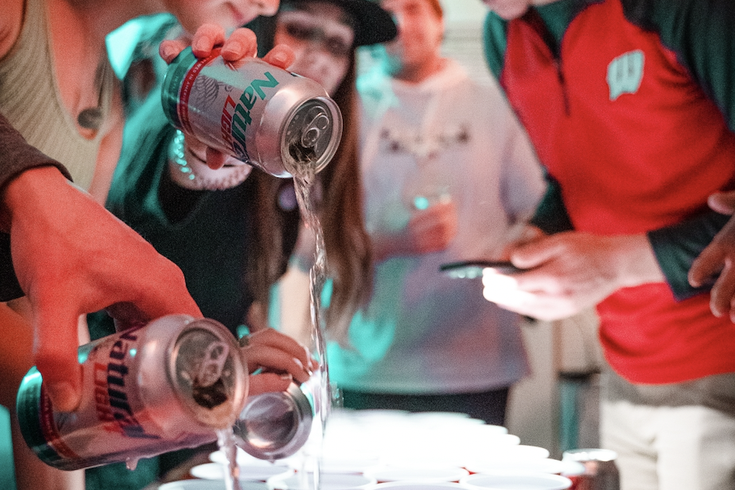
July 06, 2023
 Jonah Brown/Unsplash
Jonah Brown/Unsplash
The PLCB identified alcohol trends like alcopops, slushies and 'borgs' as some of the factors that may be contributing to binge drinking among minors throughout the state in its latest biennial report.
Alcopops, BORGs and slushies are some of the recent alcohol consumption trends that are facilitating binge drinking among teen and young adult in the state, according to a new report by the Pennsylvania Liquor Control Board.
The agency's latest research examines trends in alcohol consumption among children, teenagers and college students in the state as regulators attempt to combat binge drinking and other reckless behaviors. Alcohol is the most widely used substance among youth in the United States, with underage alcohol use contributing to thousands of deaths annually through car crashes, violence, suicide and alcohol poisoning.
PLCB regulators mentioned previous research indicating that 4.2 million Americans between the ages of 12 and 20 have reported binge drinking, and that 44% of high school students who binge drink have consumed eight or more drinks at once, putting them at risk for chronic health issues.
Some recent alcohol trends that may facilitate this type of binge drinking include alcopops: sugary, alcoholic drinks packaged like soda that contain up to 15% ABV with little or no alcoholic taste. They are often advertised to young, inexperienced drinkers and can be dangerous in excessive doses, the report found.
BORGs — an acronym for "blackout rage gallon" — have become popular among college students who have learned what they are and recipes via social media. The gallon jugs typically contain vodka, caffeinated flavor packets and powdered electrolytes. The alcohol content can be equal to about 42 drinks, and the caffeine puts drinkers at an increased risk of alcohol poisoning, the PLCB report says.
Other trends include the prevalence of craft beers, the popularization of alcoholic slushies and an uptick in young people inhaling alcoholic vapor, which can replicate binge drinking and lead to alcohol poisoning.
The effects of excessive alcohol consumption can lead to long-term cognitive impairment, decreased academic performance, memory loss and an increased risk of developing alcoholism as an adult. It is often the cause of other chronic illnesses, like heart disease, liver disease and cancer.
Despite being a preventable cause of death, PLCB notes that excessive alcohol use was responsible for one in eight deaths among U.S. adults ages 20 to 64, with 140,000 deaths reported each year across the country.
"It is widely understood and scientifically accepted that the earlier in life a person begins drinking alcohol, the more likely the person is to experience alcohol problems throughout life," the report said. "It is central to the reduction of underage and dangerous drinking to acknowledge that parents and guardians have significant and unique influence over their children's decisions regarding alcohol. Prevention must be a joint effort, not only from various state agencies but also from parents, guardians, school personnel, student leaders, law enforcement, peers, clergy and other influencers."
There were 9,220 alcohol-related car crashes in Pennsylvania in 2021, according to data from PennDOT. This is up from 7,700 in 2020 but down from 9,380 in 2019 and 9,811 in 2018. While alcohol-related crashes accounted for 8% of total crashes in the state in 2021, they accounted for 25% of fatal crashes, with crashes involving alcohol being four times more likely to result in death than other types of crashes.
Nationally, alcohol-impaired driving crashes increased by 14% between 2020 and 2021, surpassing the uptick in traffic fatalities which increased by 10%.
To prevent the sale of alcohol to minors, the state's Bureau of Liquor Control Enforcement provides a visible presence at colleges and licensed liquor stores throughout the state, with a special emphasis placed on the fall semester at most colleges. Officers are tasked with seeking out incidents of underage drinking, underage driving under the influence, disorderly conduct and ID checks.
Using data from compliance checks performed by the Pennsylvania State Police Bureau of Liquor Control Enforcement, the report found that 58% of underage drinkers were carded and then served alcohol at licensed liquor stores in Pennsylvania in 2022, up from 49% in 2021 and 54% in 2020. 42% of underage drinkers were not carded and still served, down from 51% in 2021 and 46% in 2020.
The report, first commissioned in 2006, is presented every two years to the General Assembly in order to raise awareness about alcohol issues and public health concerns. The PLCB will release its next report on underage drinking patterns in 2025.